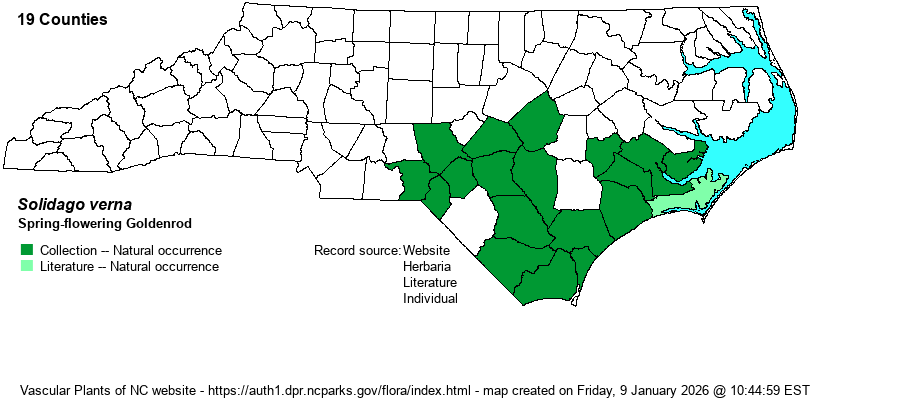| Author | M.A. Curtis | |
| Distribution | Southern half of the Coastal Plain and Sandhills.
Endemic to the Coastal Plain of NC and SC. | |
| Abundance | Generally uncommon and local within this range, but can be locally quite common, such as in parts of the Sandhills and in parts of Croatan National Forest in Jones and Craven counties. The NCNHP database has well over 130 records, and thus even though a narrow endemic to southeastern NC and adjacent SC, it is hardly a rare plant. Nonetheless, owing to its small range and G3 Global Rank, the NC Plant Conservation Program elevated its legal status in May 2021 to State Threatened. | |
| Habitat | Moist to seasonally moist Longleaf Pine-Wiregrass flatwoods, drier parts of savannas, blackwater streamhead ecotones, mesic to moist powerlines, and roadsides through these habitats. Responds well to recurring fire. | |
| Phenology | Flowering and fruiting (late April-) May-June. The common and scientific names are quite appropriate, as no other goldenrod in NC typically blooms before the middle of June, when this species has essentially finished blooming. | |
| Identification | This is our earliest flowering goldenrod, the only one to finish before July, a major clue in its identification. Plants grow from well-developed basal rosettes of ovate leaves that have winged stalks. Stem leaves are smaller and elliptical. Stems and leaves are densely soft-pubescent with short hairs. The inflorescence tends to be elongate and varies from narrowly triangular in outline to elliptical, always with strongly ascending branches. Each of the heads is larger and with longer rays than most of our goldenrod species, and thus make this a showy species. | |
| Taxonomic Comments | The original collections were made prior to 1842 by Moses Ashley Curtis from "near Wilmington, and Lenoir County."
| |
| Other Common Name(s) | None | |
| State Rank | S3 | |
| Global Rank | G3 | |
| State Status | T | |
| US Status | | |
| USACE-agcp | OBL link |
| USACE-emp | OBL link |

